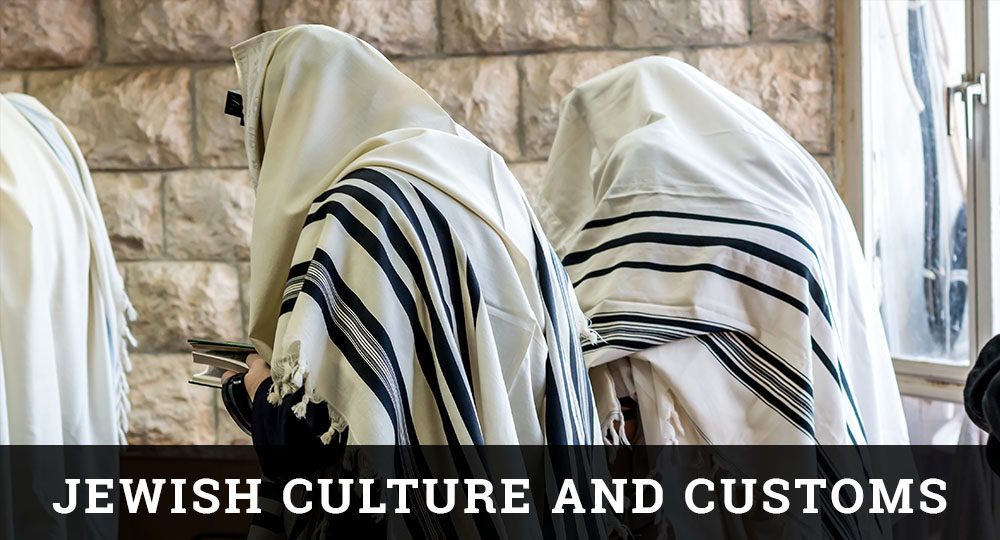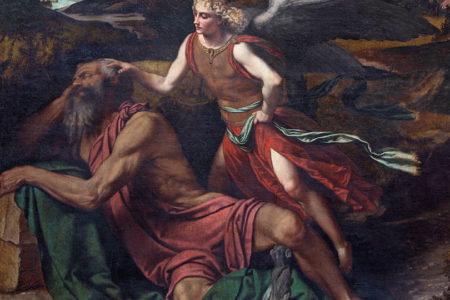Dressed for Worship Part One: The Tallit
EDITOR’S NOTE: This series explores features of life and worship as practiced by observant Orthodox Jewish people.
Who hasn’t had it happen—a missed appointment, that lack of association between a name and a face, the forgotten anniversary or birthday? Forgetfulness is a plague that knows no prejudice. That’s why everything from a string tied around a finger to Post-It Notes have been used to combat this insidious tormentor.
God, knowing that forgetfulness is just one of many human deficiencies, has given various memory aids—memorials—throughout His Word. These include special feasts, special foods, and even special clothing. When understood and properly used, these memorials serve as reminders of God’s provision, power, and person.
In the Torah we read, “Speak unto the children of Israel, and bid them that they make them fringes in the borders of their garments throughout their generations, and that they put upon the fringe of the borders a cord of blue: And it shall be unto you for a fringe, that ye may look upon it, and remember all the commandments of the Lᴏʀᴅ, and do them; and that ye seek not after your own heart and your own eyes, after which ye used to play the harlot; That ye may remember, and do all my commandments, and be holy unto your God” (Num. 15:38–40). And again, “Thou shalt make thee fringes upon the four quarters of thy vesture, wherewith thou coverest thyself” (Dt. 22:12).
A brief look at this garment reminds observant Jews of all the commandments. With 613 commandments to remember, this particular memory aid has become a graphic visual, absolutely essential to Jewish worship.
This unusual yet attractive garb came to be known as a tallit (pronounced tah-LEET). Made of wool or linen with blue or black stripes, the tallit has tasseled fringes (tzitziot) hanging from each of its four corners. It is these fringes that are biblical. The tallit is merely the medium to hold them. Originally worn as an outer garment, today it is primarily worn by men (and women in reform congregations) as a “prayer shawl” during public and private worship.
Blue stripes are a reminder of the single blue thread used in each of the four tassels. No longer used today, this blue thread was part of the Torah command to include “a cord of blue.” Some interpreters say blue was used because it is the color of the Mediterranean Sea, whereas others say it is the color surrounding the throne of God. Some choose a tallit with black stripes for one of several possible reasons. First, the original recipe for making the blue dye was lost with the inhabitants of Akko (Acre) in Israel. Second, when the Romans occupied Palestine, only royalty was permitted to wear the color blue. Third, it is appropriate for mourning since the destruction of the Temple in AD 70.
The ancient sages considered several ways in which the fringes aid in remembering all the commandments. One possibility is that the word tzitziot has the numerical value of 600, which, when added to the eight threads and five knots in each of the tassels, makes a total of 613. Another possibility is that the 608 strands of thread added to the five knots in each of the tassels adds up to 613. Regardless of the actual reason, this commandment is so important to many observant Jews that they wear a tallit katan (small tallit) under the shirt, so that the fringes may be displayed at all times. This, they believe, carries out the command, “that ye may look upon it.”
How and when a tallit is worn varies among the different cultures of Jewish people. Most men first don a tallit at the time of bar mitzvah, while a few wait until their wedding day. Some drape it over their heads, believing that it improves concentration during prayer. Others wear it merely as a shawl. Many twirl one of the fringes around a finger, kiss it, and then touch the Torah as it is carried around the synagogue during a worship service. All then recite the prayer, “Blessed art thou O Lord our God, King of the universe, who hast sanctified us by thy commandments, and hast commanded us to wrap ourselves in the fringed garment.” Many men are wrapped in a tallit for burial. A tear is then made in one of the fringes, symbolizing the end of his obligation to observe the law.
Jesus no doubt wore a tallit, as it was the everyday outer garment common in His day. According to the gospel writers, many people were healed by touching the “border of his garment [tzitziot]” (e.g., Mk. 6:56; Lk. 8:44).
They were not healed by any supernatural power of the fringes but by the authority of the one wearing them. Some Jewish men have misused this God-given command by enlarging their fringes as a sign of their great spirituality (Mt. 23:5).
Believers are under no obligation to don the tallit because Jesus Christ fulfilled the law. Instead, believers are asked to put on several other things, including the new man created in righteousness, the whole armor of God, kindness, humility of mind, meekness, longsuffering, and charity. Paul said it best in Galatians 3:27: “For as many of you as have been baptized into Christ have put on Christ.” May we never forget everything He has done for us.
(Part 2 will deal with the head covering and phylacteries.)







